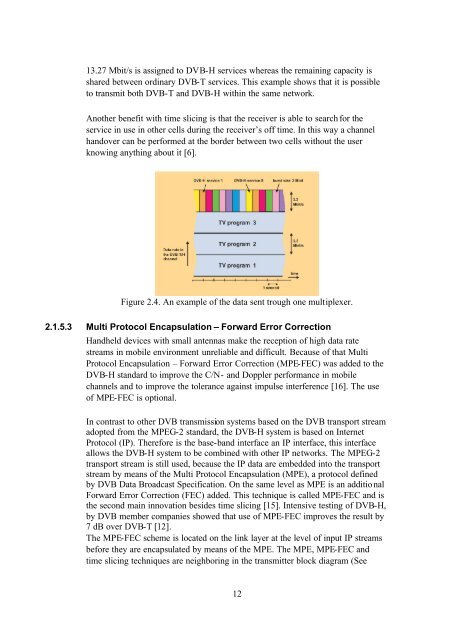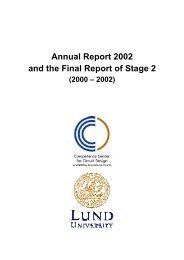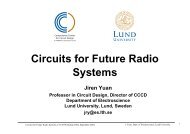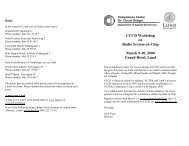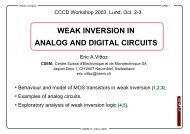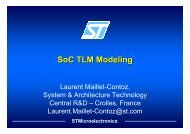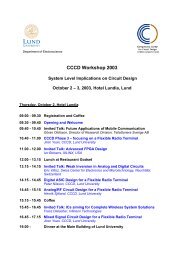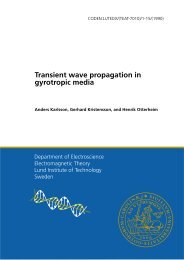Design of Antennas for Handheld DVB-H ... - Lunds tekniska högskola
Design of Antennas for Handheld DVB-H ... - Lunds tekniska högskola
Design of Antennas for Handheld DVB-H ... - Lunds tekniska högskola
You also want an ePaper? Increase the reach of your titles
YUMPU automatically turns print PDFs into web optimized ePapers that Google loves.
13.27 Mbit/s is assigned to <strong>DVB</strong>-H services whereas the remaining capacity is<br />
shared between ordinary <strong>DVB</strong>-T services. This example shows that it is possible<br />
to transmit both <strong>DVB</strong>-T and <strong>DVB</strong>-H within the same network.<br />
Another benefit with time slicing is that the receiver is able to search <strong>for</strong> the<br />
service in use in other cells during the receiver’s <strong>of</strong>f time. In this way a channel<br />
handover can be per<strong>for</strong>med at the border between two cells without the user<br />
knowing anything about it [6].<br />
Figure 2.4. An example <strong>of</strong> the data sent trough one multiplexer.<br />
2.1.5.3 Multi Protocol Encapsulation – Forward Error Correction<br />
<strong>Handheld</strong> devices with small antennas make the reception <strong>of</strong> high data rate<br />
streams in mobile environment unreliable and difficult. Because <strong>of</strong> that Multi<br />
Protocol Encapsulation – Forward Error Correction (MPE-FEC) was added to the<br />
<strong>DVB</strong>-H standard to improve the C/N- and Doppler per<strong>for</strong>mance in mobile<br />
channels and to improve the tolerance against impulse interference [16]. The use<br />
<strong>of</strong> MPE-FEC is optional.<br />
In contrast to other <strong>DVB</strong> transmission systems based on the <strong>DVB</strong> transport stream<br />
adopted from the MPEG-2 standard, the <strong>DVB</strong>-H system is based on Internet<br />
Protocol (IP). There<strong>for</strong>e is the base-band interface an IP interface, this interface<br />
allows the <strong>DVB</strong>-H system to be combined with other IP networks. The MPEG-2<br />
transport stream is still used, because the IP data are embedded into the transport<br />
stream by means <strong>of</strong> the Multi Protocol Encapsulation (MPE), a protocol defined<br />
by <strong>DVB</strong> Data Broadcast Specification. On the same level as MPE is an additional<br />
Forward Error Correction (FEC) added. This technique is called MPE-FEC and is<br />
the second main innovation besides time slicing [15]. Intensive testing <strong>of</strong> <strong>DVB</strong>-H,<br />
by <strong>DVB</strong> member companies showed that use <strong>of</strong> MPE-FEC improves the result by<br />
7 dB over <strong>DVB</strong>-T [12].<br />
The MPE-FEC scheme is located on the link layer at the level <strong>of</strong> input IP streams<br />
be<strong>for</strong>e they are encapsulated by means <strong>of</strong> the MPE. The MPE, MPE-FEC and<br />
time slicing techniques are neighboring in the transmitter block diagram (See<br />
12


